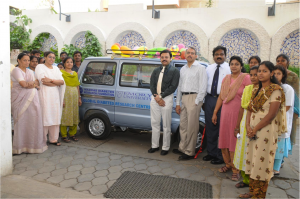Emory University played a key role in a landmark international study evaluating the safety and efficacy of the long-acting, injectable drug, cabotegravir (CAB LA), for HIV prevention.
The randomized, controlled, double-blind study found that cabotegravir was 69% more effective (95% CI 41%-84%) in preventing HIV acquisition in men who have sex with men (MSM) and transgender women who have sex with men when compared to the current standard of care, daily oral emtricitabine/tenofovir disoproxil fumarate 200 mg and 300 mg (FTC/TDF) tablets.
The study achieved its primary objective of non-inferiority with the difference approaching superiority in favor of cabotegravir, pending final analysis.
The findings were so positive that, during a planned review of study data, an independent Data and Safety Monitoring Board (DSMB) recommended the study results be announced as soon as possible. The study sponsor, the National Institute of Allergy and Infectious Diseases (NIAID), part of the National Institutes of Health, agreed with that recommendation.
Emory, through the Emory-CDC HIV Clinical Trials Unit, enrolled 7% of the study’s more than 4,500 worldwide participants at three of its clinical research sites: The Hope Clinic (86 participants) and the Ponce de Leon Center (35 participants) in Atlanta and at the CDC’s Silom Community Clinic in Bangkok, Thailand (203 participants).
“This is a landmark study with a new approach that will change how HIV prevention is being done and will open the field to future interventions,” says Carlos del Rio, MD, the executive associate dean, Emory University School of Medicine at Grady Health System. Del Rio is a member of the study team and the principal investigator at the Ponce de Leon Center.


















